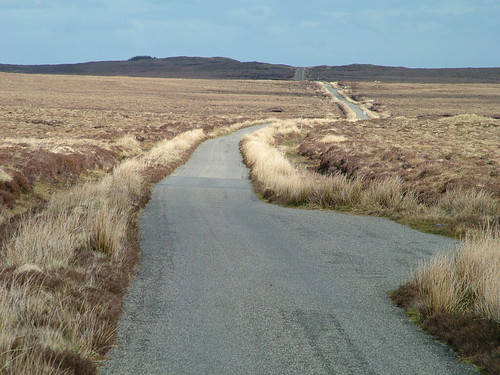This story starts on 13th December 1866, when Kenneth Maciver, a fisherman from Coll, Isle of Lewis, wed his bride, Mary Munro, a domestic servant, living in the same village. Kenneth was the son of crofter Colin Maciver and Margaret Matheson. Mary was the daughter of grieve Alexander Munro and Janet Macdairmid.
Nearly fifteen years after their marriage, the enumerators for the 1881 census found Kenneth and Mary with their children Alexander (aged 13), James (11), Murdo (9), Donald (3) and Margaret (1). The child called Donald was born on 4 February 1878, and he is the subject of this article. Kenneth and Mary had twelve children in all, but by the beginning of 1917, only five were left alive.
On 14 April 1889, Kenneth and his family embarked the emigrant ship “Scandinavian” for Canada at Glasgow. They were among about 300 Scottish and Irish emigrants who were seeking a new life in the colonies. Upon arrival in Halifax, they proceeded inland and settled at the Lothian colony, 60 miles southeast of present-day Saskatoon.
Whilst still in his teens, Donald, now known as Dan, along with Malcolm Docherty (…) journeyed to Winnipeg and joined the Canadian Dragoons. On 19 October 1899, again at Winnipeg, he joined the Canadian Special Service Forces for the war in South Africa. Fourteen months and twenty-three campaigns later, he was discharged on Christmas Day 1900, bearing the Queen’s Medal with four clasps (Paardeberg, Driefontein, Cape Colony and Transvaal).
Fourteen years later, the spectre of war once more descended over Europe and Daniel responded quickly. Six weeks after the outbreak of war, he enlisted at the Valcartier barracks in Quebec on 17 September 1914. On his attestation paper he was quoted as a Real-Estate Agent, with his father Kenneth Mcivor (sic) living in Saltcoats, Saskatchewan, although elsewhere Maciver senior is listed at Barvas, Saskatchewan. This hamlet is located a dozen miles north of Saltcoats. On enlistment, Daniel is described as 5 ft 10 (1.77 m) tall, of fair complexion with brown eyes and brown hair. A mole was seen at the centre of his back. He professes to be of the Presbyterian faith.
Daniel, an accomplished soldier by all accounts, does well on the fields of battle, and is promoted to the rank of Company Sergeant-Major in the 5th battalion Canadian Infantry (Saskatchewan Regiment), the Fighting Fifth. He is Mentioned in Despatches twice, a distinction in itself. References to a Distinguished Conduct Medal being awarded to Daniel Maciver are, unfortunately, incorrect. He is offered to opportunity to return to Canada for further promotion, but he declines, wishing to remain “with the game”, to quote a contemporary newspaper cutting.
On 28th April 1917, the battle for Vimy Ridge is nearly over when Company Sergeant Major Daniel Maciver is killed in action. He was aged 41. The news took a few weeks to filter through to his father in Canada. It took another few weeks for the news to make it to the columns of the Stornoway Gazette. This is a transcript of that article, dated June 1917.
LEWISMAN OF THE FIGHTING FIFTH KILLED
From the “Yorkton Enterpise” (Sask, Canada) to hand we cull the following:-
“Word was received by Mr Maciver, Saltcoats, on 19th May, that his son, Sergt Major Dan Maciver, D.C.M. of the Fighting Fifth battalion, had been killed in action. Dan, who was well known and a prime favourite throughout the district, was born at Coll, Lewis, Scotland, and came to Canada with his parents in 1889, settling in the Lothian Colony. Whilst still in his teens, Dan, along with Malcolm Docherty (now Major Docherty, DSO) journeyed to Winnipeg and joined the Canadian Dragoons. When the South African War broke out, he was one of the first to volunteer for active service, taking part in no less than twenty-three campaigns. At the outbreak of the present conflict Dan again showed his military spirit by enlisting and went overseas with the first contingent. After reaching France, he gave a splendid account of himself, and was promoted on the field to the rank of Sergt.-Major, being also frequently mentioned in despatches for bravery and coolness in action. Some time he was offered the chance to return to Canada for promotion, but preferred to stay with the game. His death is the fourth that has occurred in the family within the last five years, and he is survived by his parents and two brothers and two sisters out of a family of twelve.”
A year last Christmas, Sergt.-Major Maciver paid a visit to the haunts of his youth at Coll, and needless to say had a very cordial welcome.[end of article]
Daniel Maciver was named Donald by his parents, but seems to have adopted Dan or Daniel as a first name in Canada. His surname appears to have modified a little as well; his service record in the Canadian Army is under the name of Mcivor. Taking all the historical documentation into account, there can be little doubt that this is the story of Daniel Maciver, a Lewis-born soldier who served with distinction, and made the supreme sacrifice for King and country.
It is therefore puzzling that his name was omitted from the war memorials at Stornoway and Back. Neither is he included in Loyal Lewis Roll of Honour 1914-1918. However, even the Lewis War Memorial does not list all the names of those lost in the Great War, and neither is the Roll of Honour comprehensive, complete and correct. However, it has transpired that he is also not listed in the first volume of the regimental history of The Royal Canadian Regiment (by Fetherstonaugh, covering 1883-1933).
Daniel Maciver is remembered by the Commonwealth War Graves Commission, and through an inscription on the Vimy Memorial near Arras, France.

